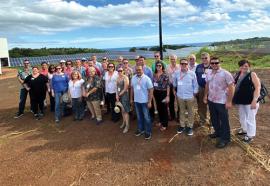Coal's Market Share of Electricity Supply
This fourth episode of Podcast Utilities Fortnightly takes a deep dive into the history over the decades of coal's market share in U.S. electricity supply and how it's falling rapidly in recent years with a huge impact on the grid's carbon footprint. This January, coal plants produced just nineteen percent of our electricity, an all-time record low. How did we reach this point? That's the subject of this ten-minute program.







